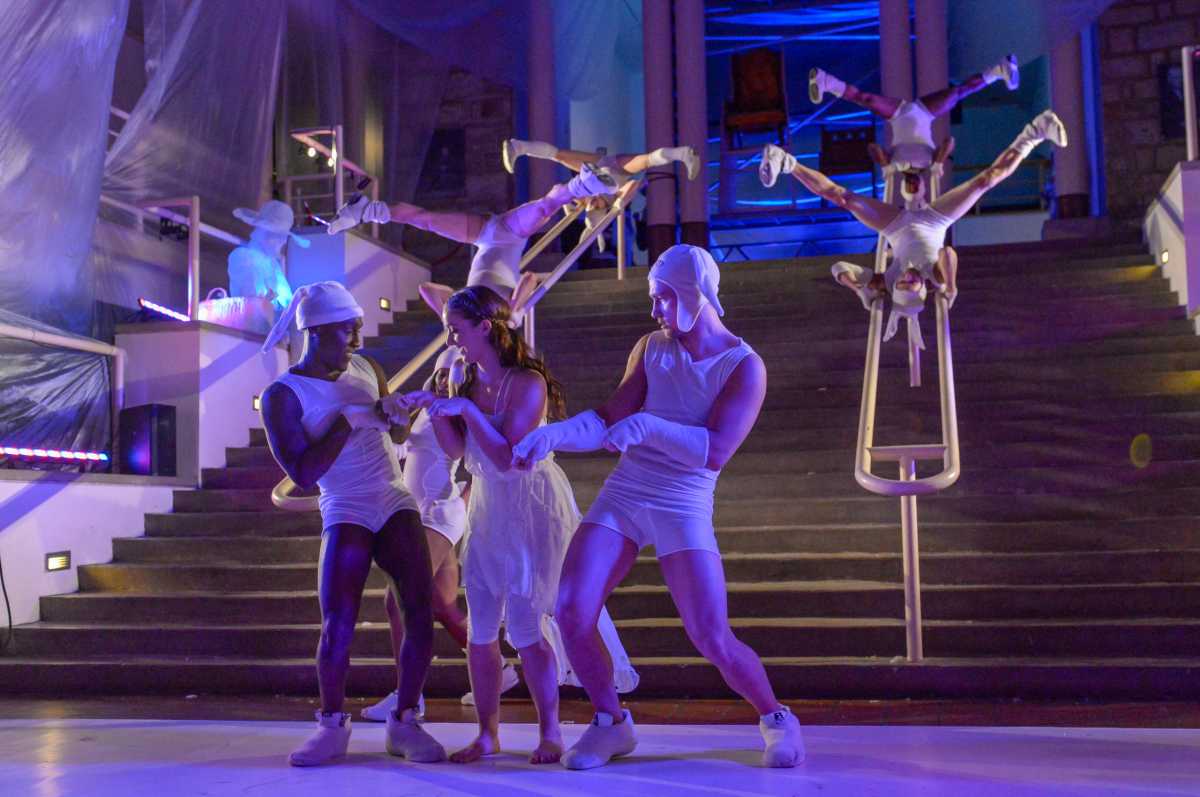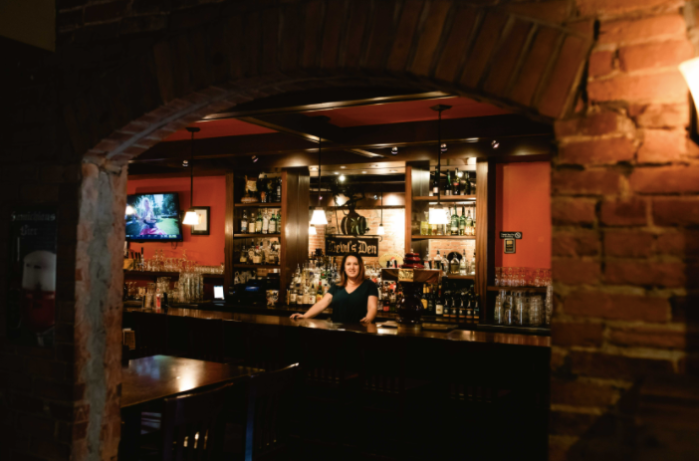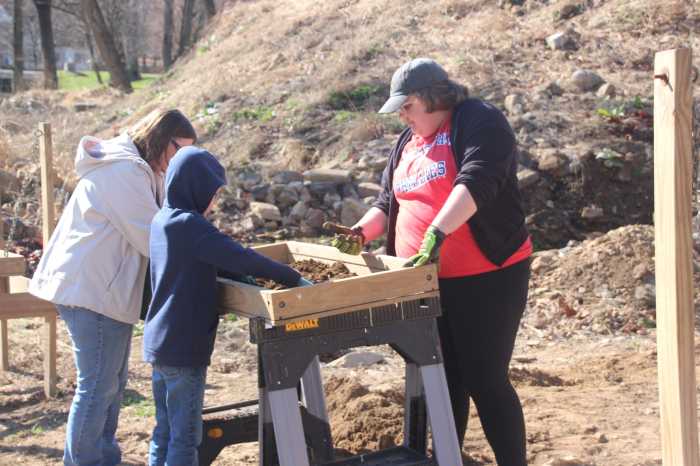Brian Sanders, the Philadelphia-based choreographer-dancer and LGBTQ+ icon, has forever kept in fighting shape by pushing the boundaries of dance traditionalism into something freshly theatrical, thematic, acrobatic, immersive and audience-interactive when it comes to his work and that of his JUNK troupe.
Playing on turned-upside-down notions of gender and eroticism with the unsuspecting use of found objects and unusual locations apart from this city’s usual stages, Sanders’s blurred lines between dance and physical theater have become favorites of Fringe audiences and mainstream moms and dads as he can also be found performing with the Philadelphia Orchestra during March’s performances of “A Modern Carmen Fantasy,” and its rendition of Stravinsky’s “Firebird Suite” (March 10-12 on the Kimmel Cultural Campus’s HQ).
Going into JUNK’s annual winter fundraiser this weekend, Snowball – this year, Snowball: Back on Ice at Globe Dye Works (4501 Torresdale Ave.) on Jan. 21 – highlighted by a new performance piece featuring a life-size illuminated ice cube performance and an aerial “Flushdance” starring JUNK alumnus Stephen Vaughn, Sanders spoke about what it is to be a dancer to all and a hero to many.
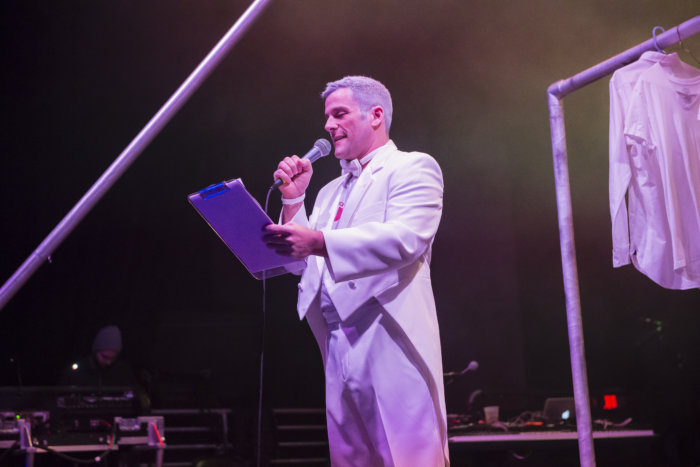
Since its start 30 years ago, what have you, JUNK, and its aesthetic done for the performance world and changed how we see and feel dance, movement and choreography?
I feel like so much informs us on how we see dance. We have spent the last 10 years watching television shows that teach us what’s impressive with cut-aways to the judge’s and audience’s reactions. That’s why the “experience” aspect of what we do is so important. When I started, it wasn’t just the clubs I performed in here, it was the smell, the sub-woofers beating you in the face, the rock concert lighting – those types of things led to the possibility of experiencing dance in a new way.
I certainly wasn’t alone in this. It seemed like the performance world at large was looking for new ways in, hence the birth of Philadelphia’s Fringe Festival. I don’t think the dances themselves have changed as much as how we think of dance has changed… hopefully to something less narrow.
Can you talk about the love and inspiration of Bob Fosse’s Dancin’ and Pilobolus on Broadway on your work?
They were the voice of a new generation thinking outside the box. New images of sexiness and bodies used in ways that was new to Broadway. It was inspirational. Remember, this was before Time Square was “corrected” and the experience of attending a Broadway show was amid a vibrant sex industry. As a 14-year-old, I was in awe of all of it.
I get that. Define without confining what it is you and JUNK do? I know that it brings a choreographed-but-improvisational set of movements into unpredictable, not-usual immersive locations/scenarios and that it exists in a space between dance and physical theater.
I think part of it all is seeing things in a different context. When I founded JUNK, I was so tired of the “tights and lights” scenario that became the norm of the 1980s. It’s like if it didn’t have a bright cyclorama lit up behind it, it wasn’t dance. One of my early Fringe works was set underneath the Ben Franklin Bridge. We lit up the gigantic steel as part of our backdrop. The context made the piece.
What can you say about making your annual wintry-themed fundraising Snowballs innovative for their audiences— visually in terms of their staging, choreographically, when it comes to risk, and how all that is achieved through “a life-size illuminated ice cube performance” and whatever “Flushdance” will be?
I like to use my Snowballs to celebrate creativity, so it’s about the attendees having fun and being creative too. Being amongst our friends and fans, and thinking outside the box opens our minds. As for the Ice Cube? Somehow, I made a piece where the dancers barely touch the floor. Who knows what drives me. “Flushdance” is a classic of JUNK’s from 2002. It is a send up of Flashdance, the iconic dance movie from the 1980s, complete with water and strobe lights.
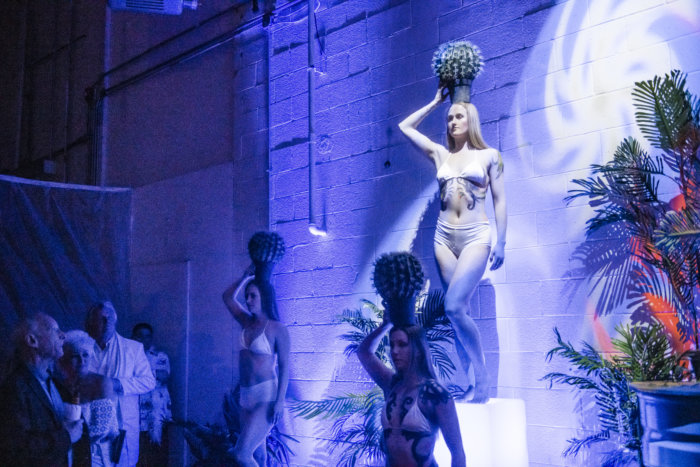
That sounds scary. Comment please on your continued collaboration with the Philly Orchestra and how that plays out via “A Modern Carmen Fantasy”?
This work has been really fun. I have gone back to the original novella for great detail on the characters, and I came up with Carmen’s modern-day life as a pole dancer; beautiful, magnificent, powerful in her own right, while also being provocative and alluring. I have somehow talked the Orchestra into installing a 20-foot dancing pole in the center of the stage, amidst the Orchestra playing, for us to really see what Carmen is about. Let’s hope they invite us back after this.
Whether a JUNK joint, Snowball, or a gig with the Orchestra, what is the one thing that your shows must have as its signature to be Brian Sanders?
Imagining things in a slightly different way. Not bold, new, slam-in-your-face contradictions to the norm but, as I like to say, using the ‘same old thing’ and turning it on its head to look at it in a new light.
What sort-of inspiration are you to young LGBTQ+ Philadelphia artists?
There’s one generation that remembers me as the guy who used to hang from the ceiling at Shampoo Nightclub. There’s those that saw me butt-naked on the cover of Philly’s newspapers with my HIV+ tattoo, and saw a proud, Out dancer. And, finally, I hope there are those to whom I am the inspiration of “what not to do.” I am an older generation of creative. I hope young artists look at my work, and roll their eyes and say how tired and done, and push themselves to find new and vital ways just like I did.
To learn more, visit briansandersjunk.com.



